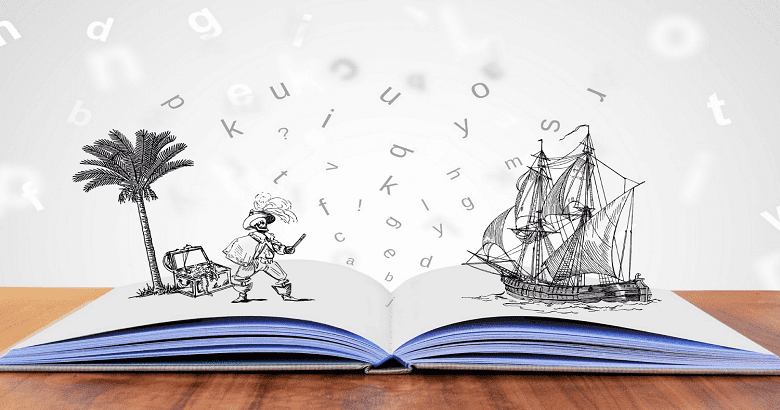Picture books have a unique charm, captivating both children and adults with their blend of storytelling and illustrations. If you have a passion for storytelling and art, bringing a picture book to life can be fulfilling. However, navigating the publishing process can seem daunting at first. Fear not! In this comprehensive guide, we’ll walk you through every step of the journey, from conceptualization to publication. Let’s embark on this exciting adventure together.
Steps to Publish Your Picture Book
Understanding the Picture Book Market
Picture books possess an enduring allure, mesmerizing readers through vivid illustrations and enthralling narratives. In the current marketplace, picture books are more diverse than ever, appealing to various interests and origins. There is a picture book for every reader, ranging from traditional narratives that explore social issues to inventive stories that evoke themes of friendship and adventure.
Authors and illustrators aspire to attain a critical understanding of the prevailing trends within the picture book industry. By remaining well-informed regarding contemporary themes, artistic movements, and narrative methods, one can customize one’s creative vision to effectively connect with contemporary readers. Furthermore, by determining the intended demographic—preschoolers, early readers, or middle-grade students—your narrative and artwork can be customized more precisely to suit their inclinations and requirements.
Crafting Your Story
A picture book’s core consists of a narrative that captivates, amuses, and motivates young readers—its story. When formulating your idea, consider the interaction between the text and illustrations; these components ought to synergistically support one another to furnish a unified reading encounter. To construct a captivating narrative, one must generate concepts and motifs that deeply resonate with the target audience.
Engaging readers’ souls requires imbuing a narrative with authenticity and emotion, regardless of whether the source material is current events, personal experiences, or folklore. Pay critical attention to the manuscript’s structure, cadence, and voice as you compose it. A simple yet effective narrative arc, with a distinct beginning, middle, and conclusion, is characteristic of picture books. By employing succinct language and evocative imagery, one can elicit the readers’ imagination and establish indelible moments that endure well beyond the last printed page.
Polishing Your Manuscript
As critical phases of the picture book publishing process, editing and revising guarantee that your manuscript is flawless, beginning with clarity, coherence, and consistency. Examine your story. Is the character development satisfactory? Is there a seamless transition of events between scenes in the plot? It is advisable to solicit feedback from writing groups or beta readers to obtain novel insights regarding your work. Receiving constructive criticism can be an invaluable tool in identifying areas that require improvement and enhancing the overall impact of your narrative. While revising your manuscript, carefully consider the language, cadence, and pacing selection.
Picture books frequently employ rhythmic language and repetition as literary devices to captivate young readers and generate a feeling of expectation. Perform phrasing experiments and read your narrative aloud to assess its flow and cadence. Ultimately, guarantee that your manuscript adheres to industry norms regarding formatting, including explicit directives regarding the positioning of illustrations, dialogue attribution, and page breaks.
Finding the Right Publisher
It is vital to conduct publisher research to identify the most suitable one for your picture book endeavor. Commence the process by gathering an inventory of publishing houses, specifically focusing on picture books and children’s literature. Consider publishing houses that have previously produced books of superior quality within your genre or area of expertise. Thoroughly examine the submission guidelines provided by each publisher, carefully noting any particular requirements or preferences that may be specified.
However, some publishers can allow unsolicited submissions, and others may require that you submit a query via a literary agent. Develop a persuasive query letter or book proposal that emphasizes the distinctive attributes of your picture book and substantiates its suitability for their anthology. When feasible, demonstrate your understanding of the publisher’s catalog and market preferences by personalizing your submissions. Maintain a steadfast mindset in the face of potential rejection; perseverance is critical in the fiercely competitive publishing industry.
Accessing the Publishing Process

The real job commences once a publishing contract has been obtained. Bring your picture book to life through close collaboration with your editor, illustrator (if applicable), and publishing team. Collaboration between the author and illustrator ensures that the artwork enhances the narrative experience and complements the text during the illustration process. Maintain an open mind toward revisions and feedback, as the objective is to produce a unified visual narrative that deeply connects with readers.
Throughout your picture book’s production and printing phases, maintain awareness of significant milestones and impending deadlines. Thoroughly examine proofs and layouts, looking for potential errors or inconsistencies requiring rectification. While distribution and marketing are under the purview of your publisher, feel free to endorse your book via personal channels, including social media, author appearances, and school visits. A picture book launch is a collaborative endeavor, and you can share your story with the world through diligence and enthusiasm.
Building Your Author Platform
Establishing a connection with readers and effectively promoting your picture book requires an author platform. Commence by establishing your author brand—that is, what distinguishes you as a creator and writer? Create a reputable digital presence by maintaining a website, blog, or social media accounts. This will enable you to disseminate information such as behind-the-scenes musings, updates, and insights into your creative workflow.
Moreover, actively interact with your audience through active participation in online discussions, responding to comments, and providing valuable content that specifically caters to your target demographic. Explore partnering with fellow authors, illustrators, or influencers to broaden your audience and establish connections with fresh readers. Where you can interact with fans and forge enduring connections, in-person events such as book signings, author talks, and literary festivals should not be undervalued. You will not only increase book sales but also establish yourself as a credible authority in the field of children’s literature by developing a solid author platform.
Launching Your Picture Book
The book launch signifies the official introduction of your picture book to the public, constituting a turning point in your publishing voyage. Organize an impactful launch occasion that embodies the essence of your narrative and captivates attendees of all age groups. Organize a memorable occasion, such as a bookstore signing, virtual launch party, or school assembly.
Utilize your author platform to extend invitations to family, friends, admirers, and members of the publishing community to publicize your book launch. Remember to express your gratitude to all those who assisted you throughout the process, including your publisher, editor, illustrator, and consumers. Your moment has come to flourish.
Nurturing Your Writing Career
Your writing voyage never truly begins with publishing your first picture book. Sustain your commitment to developing your writing abilities, actively pursue novel avenues for progress, and actively engage in the writing community. By cultivating a writing vocation with enthusiasm and determination, one will establish a foundation for subsequent accomplishments and artistic gratification.
Sums Up
A picture book’s publication is a labor of affection that demands commitment, ingenuity, and perseverance. Every stage of the endeavor, ranging from story creation to navigating the publishing process, presents its obstacles and benefits. Through adherence to the recommendations delineated in this all-encompassing manual, you will possess the necessary capabilities to materialize your picture book aspirations and impart your narratives to a wider audience. It is important to bear in mind that the trajectory of each author is distinct; therefore, enjoy the journey and fully appreciate each stage of the publishing procedure. Best wishes for your inspiring picture books to bring astonishment, delight, and creativity to readers of every age.
Frequently Asked Questions
-
How long does it take to publish a picture book?
The timeline for publishing a picture book can vary depending on factors such as manuscript readiness, illustrator availability, and the publishing house’s schedule. On average, it can take anywhere from one to two years from manuscript acceptance to book release.
-
Do I need to have illustrations ready before submitting my picture book manuscript?
While it’s not necessary to have illustrations prepared in advance, it’s helpful to include a few sample illustrations or sketches to give publishers a sense of your artistic vision. If you’re not illustrating the book yourself, the publisher will typically match your manuscript with an illustrator during the publishing process.
-
How do I protect my picture book idea from being stolen?
While it’s natural to be concerned about intellectual property theft, it’s essential to focus on creating a polished manuscript and building relationships with reputable publishers and industry professionals. Copyright your work before submitting it for publication, and keep detailed records of your creative process to establish ownership in case of disputes.
-
Can I self-publish my picture book?
Yes, self-publishing is a viable option for authors who want more control over the publishing process and royalties. Keep in mind that self-publishing requires a significant investment of time and resources, including hiring illustrators, editors, and marketing professionals. Research self-publishing platforms and consider consulting with experienced self-published authors for guidance.
-
How do I promote my picture book after it’s published?
Marketing and promotion are essential for maximizing the visibility and sales of your picture book. Leverage your author platform, including social media, author website, and mailing list, to connect with readers and generate buzz. Explore book signings, school visits, virtual events, and collaborations with bookstores and libraries to reach a wider audience.




